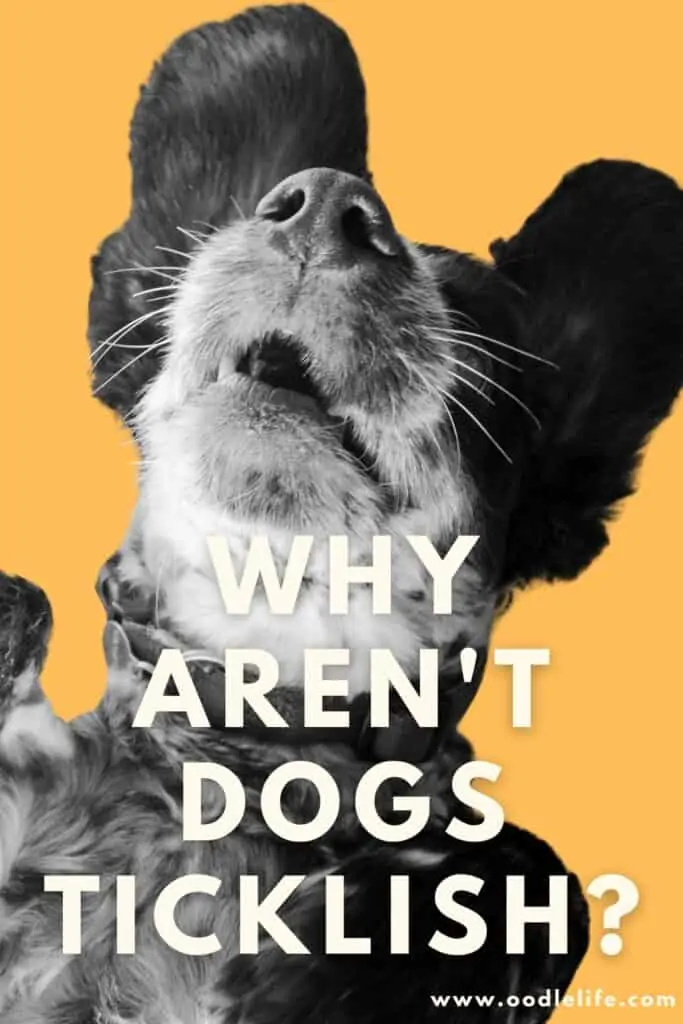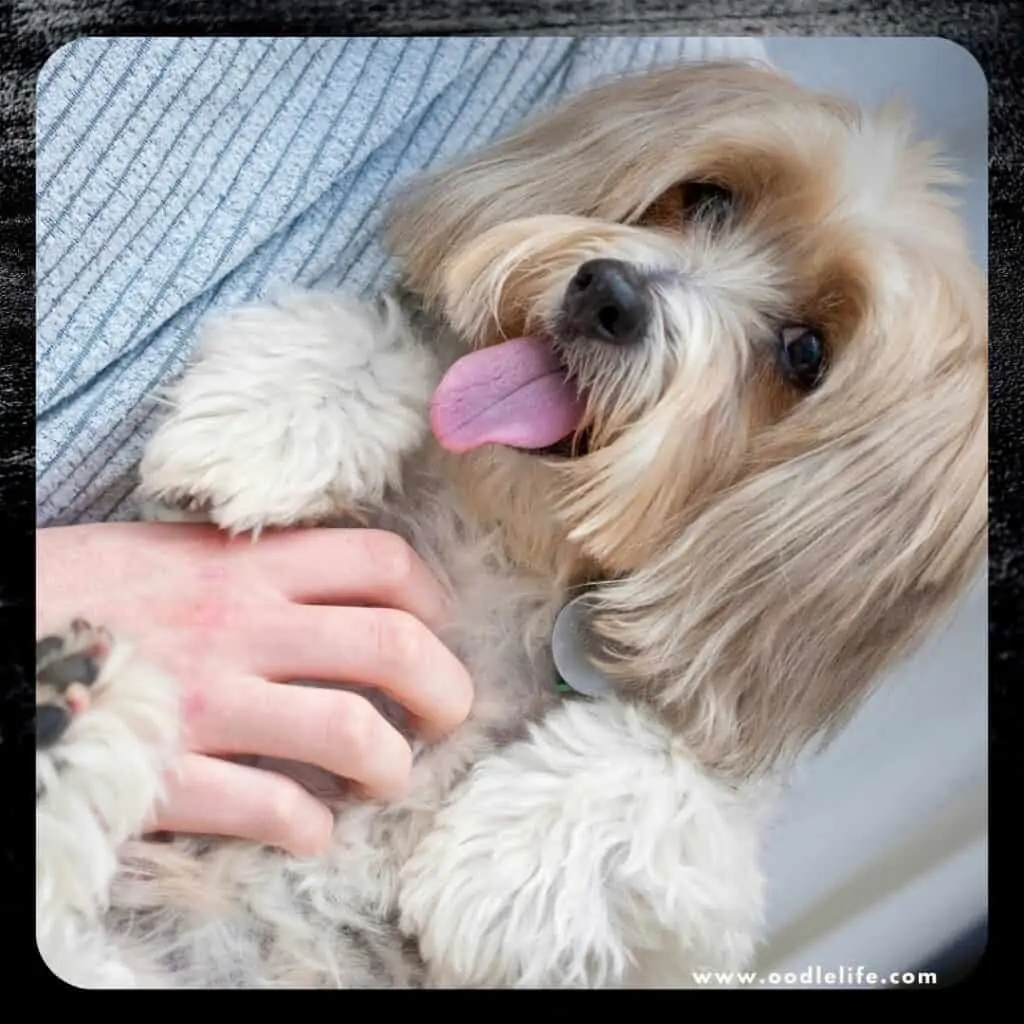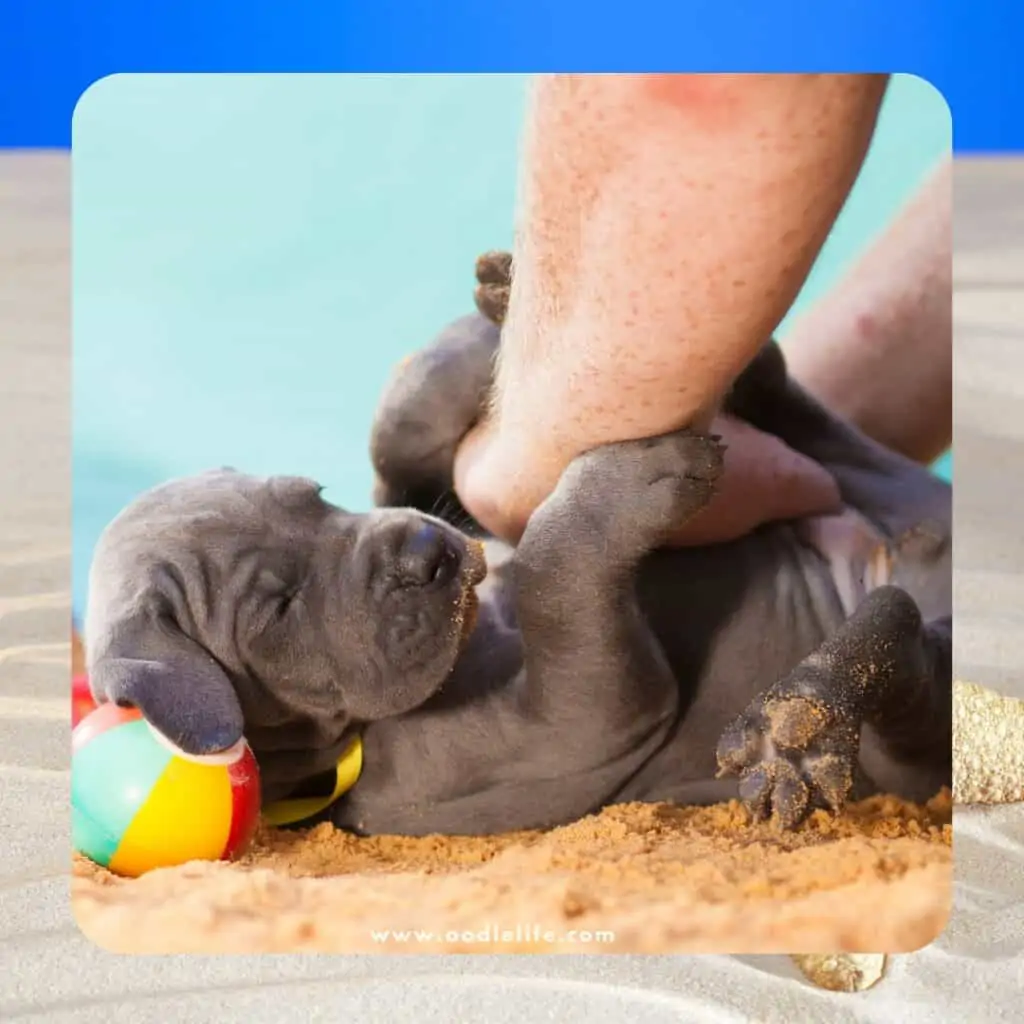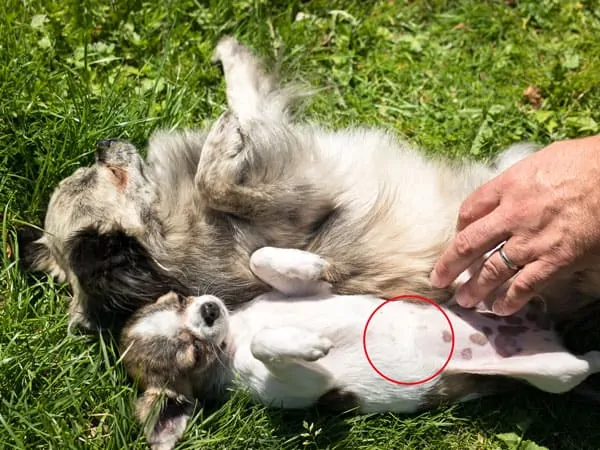Why Aren’t Dogs Ticklish? [4 Steps to Tell]
All personal human relationships have at some point or the other been victim to the ‘tickle monster.’ Be it a mother tickling her child or a tickle war between siblings or friends, tickling has become a way in which we show affection.

Once you welcome a furry friend into your home, they become an integral part of your life-no less than family members. Affection towards pets can also come in many forms. These could range from petting or patting to playing games, snuggling on the couch, and yes, tickling too.
And while we do tickle dogs, do we ever stop to consider whether they feel ticklish? Not so much. Why arent dogs ticklish?
Before we jump into whether dogs are or aren’t ticklish, let’s take the science-route to understand the concept of tickling.
What is Tickling?

Tickling may not be as simple as we make it out to be. The dictionary definition is a touch or a mild sensation intended to evoke human laughter as a response. For some people tickling may be fun and exciting. You’ll know by the way their eyes light up and the uncontrollable wiggling and laughing. For others, not so much. You’ll know by the way they glare at you in response. The same could be true for dogs, on the premise that they do feel ticklish.
While trying to establish the science behind the phenomenon, scientists broadly categorized the different kinds of feelings involved into two groups.
Gargalesis
This is what we are most familiar with-a sensation that results in immediate and involuntary laughter. The basics on how to tickle someone to achieve this result is to put slight repeated pressure on sensitive spots or to brush against these areas softly and then revel in the laughter that follows. Different people feel ticklish in varying spots-ranging from the neck, underarms, ribs, or soles of feet.
Knismesis
Have you ever had an insect crawl on you? Like an ant that hopped on your hand from an open biscuit that you grabbed? Or when you intentionally cupped your palm and scooped up a ladybug, and it ran helter-skelter all over your hand and arm?
Perhaps a plant leaf brushed across your shoulder on your last trek, and you shrieked? Involuntarily, of course. This kind of ticklish sensation is subtle, but it tends to startle you or shake you up from the inside.
Ever looked at your furry friend and wondered why they can sleep through anything, including an ambush by mosquitoes?
Dogs adjust to insects crawling on them a lot easier than we humans do-even though they have the same nerve endings and skin sensitivity levels. Their protective coat probably has something to do with it.
Are Dogs Ticklish?

Dogs CAN be ticklish but only experience one half of what humans experience when tickled. Dogs can’t laugh (gargalesis) but can feel ticklish (knismesis).
While humans can experience both Gargalesis and Knismesis, dogs aren’t as lucky.
Dog’s can’t laugh. Pause for a moment and think, have you ever seen your dog roll on the floor and laugh when you scratch his neck or the back of his ear? He may enjoy the touch and would probably offer you a goofy ‘dog grin,’ but he won’t burst into peals of laughter.
Dogs CAN feel a tickle and react though! Knismesis, however, is something dogs do experience. It is more of a reflex action than a tickle, and while mild, it undoubtedly exists. Vets use knismesis to check for spinal injuries in dogs.
Don’t believe me? Try a little experiment. The next time your pup is asleep, very gently brush your finger against the tufts of fur under his paws.
What happened when you tried? Your pup probably yanked his leg away or shot up and glared at you for spoiling its sleep.
How Does A Dog React When Tickled?
You can’t expect your dog to laugh as you or any other human would. That’s just silly now, isn’t it?
But yes, if you attempted to tickle your dog, you would notice a reaction. Your canine friend might growl at you. He might rub himself against some furniture. He may also use his hindleg to scratch or itch the back of his ear.
Some dogs shake their heads vigorously as well. If your pet is like my Lab, she’ll plop her bottom on the ground, close her eyes, and get so lost in the sensation that she’d eventually lose balance and topple over. Always a funny sight.
But here’s the catch. Is your pet reacting to being touched, or are they ticklish?
Is Your Dog Ticklish?

If you grew up with extended family or several siblings you might know the pain – I always lost in a tickle war. I adapted by learning to control my reaction to being tickled. My kids are perplexed. How can someone not be ticklish? The logic fails them.
The same is true for dogs. Not that your pup can control being ticklish. But that each dog is different and has varying degrees of sensitivity. Your pet may be sensitive to the slightest touch or be oblivious to even the most painful-looking child patting and tail yanking.
If you want to know whether your pooch is ticklish, look for signs of the same.
Signs your Dog is Ticklish
If your dog suddenly jerks, like when you tickle his under-paws, then it is a sign that he may be ticklish.
Another tell is involuntary leg action. What happens when you flip your dog on his back and give him a belly rub? Some will grunt and groan. Others twist and turn. A few remain deathly still. And then there are those, like my Lab, whose hindlegs shake as a creature possessed.
If you haven’t tried this and don’t know which category your furball belongs to, go ahead and try it now.
But do be careful. Tickling is something we associate with fun. Because we can rationalize it, dogs can’t. To them, it’s a touch, and it depends on their experience whether they grow to enjoy, tolerate, or hate it.
Before you subject your canine buddy to bouts of tickling, find out whether he enjoys it. If not for any other reason, then at least ensure that your playtime together is fun.
Nine out of ten times, a dog’s response to tickling is a happy one. You’ll know by their goofy ‘dog grin,’ closed eyes, wagging tails, or better still when they flop on the floor and offer you their bellies for better reach.
Varying Reactions to Tickling
Do you like being tickled? Some people don’t. We can see the same in dogs too. Your pet will react to being tickled, but that doesn’t mean he has to like it.
If your dog doesn’t enjoy the sensation, he could start barking at you aggressively or even snap. It would be best to observe his reaction and stop if you notice that he doesn’t enjoy it.

Helping a Dog that Doesn’t Like Being Tickled
Sometimes even with humans, we aren’t comfortable with being touched, let alone tickled. Dogs tend to get uncomfortable as well. This is particularly true if you have a rescue dog. If your pet is uncomfortable and you are worried about him, there are several things you could try to encourage a positive change and a better reaction to fun stuff like tickling.
Looking for the Ticklish Spot
Like humans, dogs have that sweet spot where they almost always welcome a touch. This spot could be behind the ear or under the chin. The belly and the upper tail area are also good experimental places. Sometimes even the underside of his paws could be his ‘sweet spot.’ Try to find this spot and judge his reaction as you touch him. If he does get aggressive when your fingers pass over a particular point, be considerate and avoid that area.
Creating a Positive Environment
Creating a safe space is very important if you want someone, even your dog, to feel comfortable and let down their guard. Make a space where your dog won’t feel stressed or uncomfortable in any way. This could be his bed or the living room carpet, right beside his favorite chew toy.
Your dog’s safe space should ideally be peaceful and not too noisy. Your pooch is less likely to get aggressive when they are relaxed and don’t feel threatened.
Take it Slow
If your dog is not all that comfortable with being touched, then you should take it slow. Please don’t jump into full-on harassment by forcibly tickling him even though he doesn’t seem to like it. Perhaps you can start by just petting him, and when he looks relaxed, you could ease him into the concept of tickling being fun.
What Not to Do While Tickling your Dog?

When you tickle your dog, you must understand his or her reaction. Misunderstanding his cues could end with him becoming aggressive and barking at you when you try to tickle him.
If you notice that no matter how much you try to ease him into it, your dog still isn’t okay with the concept of being tickled, then do not force him. Surely you love your dog enough to want what’s best for him. Try to keep from getting carried away.
Also, be careful not to tickle them with long nails or any pointed accessories on your fingers, as you could unintentionally end up hurting your dog.
You may have also noticed that dogs don’t like it when you tickle or even touch them in specific spots. Give them time to adjust to being okay with exposing those spots, don’t force it on them.
One often overlooked safety precaution is to not play with your pet around any pointy-edged furniture. If your tickle startles him and he instinctively jerks back, he could get seriously injured.
Please remember that even though your dog is your best friend, companion, and part of your family, he is still a dog, not a human being. It would be unfair to tickle him in anticipation of a human reaction from him-you will only be greeted with disappointment.
Frequently Asked Questions
Can Dogs be Tickled?
Dogs are ticklish in some ways, yes. However, they do not react to being tickled in the same way that you and I would. Where a human would laugh at being tickled, a dog may jerk or shy away.
Do Dogs Enjoy Being Tickled?
Most of the time, it is found that a ticklish dog is a happy dog. However, there is no straight and simple answer to this question. It just depends on the preference of the dog. You could try to entice your dog into liking being tickled, though. You can achieve this by making some alterations to his or her daily lifestyle and environment.
In Which Spots Do Dogs Get Tickled Most?
While each dog’s ticklish or soft spots may differ, some of the common areas would be behind his ear or under his chin. Some dogs even get tickled on the top of their heads or underneath their paws. You could also try tickling your dog on the sides or his belly when he rolls over. Some dogs seem to be ticklish on their paw pads and gentle petting of the dog’s foot can trigger a “dog laugh”.
Do Dogs Laugh in Reaction to Being Tickled?
Dogs do get tickled, and they may react by jerking away or even shuddering. Gargalesis, a type of ticklish feeling that results in laughter, has not been seen in dogs as yet. Science also has not been able to prove that dogs laugh.
Do Dogs Laugh?
While many pet owners and dog lovers claim that they have seen their dogs laugh in excitement, the fact is that dogs cannot laugh, mostly. Not like humans, at least. There are still arguments regarding the matter, and we will hopefully have a more solid answer soon. Till then, go with what most owners claim. Dogs do ‘grin’ and you can train dog to smile.
See more dog videos on our Oodle Life YouTube channel!
To Sum It Up…
Your dog is your family, your friend, and even your companion. It is only natural for you to want to play with him and for him to want to play with you. Tickling usually comes under the whole playtime package, and you can go ahead and tickle your dog with no qualms unless you’re certain that he doesn’t enjoy being tickled.
So, when you’re lazing around on a Sunday afternoon with your dog next to you, you could roll him over, playfully pet him and tickle him and laugh along as he enjoys these teeny tiny moments of pleasure that he gets with you.
When it comes to dogs, there is no need to hold back the love. There is no fear of being judged or misunderstood. You can be who you are with him without a care in the world. And no matter what phase of your life you are in, be it happy or sad, your dog will always be there to play with you and make you feel better.
To end with, just a small reminder, you love your dog and will want only what is best for him. Don’t doubt yourself when it comes to that. Tickle him, play with him, smother him; he will only love you more for it.